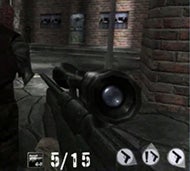Background
Sound effects are often used to communicate important information in movies, television shows, and video games. Nevertheless, there are times when playing sound may be inappropriate (such as in public spaces or late at night while family members are asleep), sound may not be heard (in a noisy environment), sound can become tiring (after long game-playing times, or when parents are taking their children for a long drive) and there are hard of hearing and deaf people that do not have access to this information. Therefore, a visual alternative to sound which can relay the same information would be beneficial to many people in many markets. With closed-captioning systems, there is a problem of lag, by the time the closed-captioning has described all of the non-visual information, the action in the movie or television show has already moved on to something else.
Description of the invention
This technology, referred to as the Sound Sign or Sound Compass, allows for the symbolic representation of sound effects in closed-captioning and in video games by indicating the direction, sound type and proximity of the sound effects. In this way, users who have disabled the sound in a movie, television show, video game or hand held device, who are hearing impaired, or who otherwise are unable to hear a particular sound may be able to still have important information relayed to them.
Above is an example of how Sound Sign or Sound Compass could be implemented in first person shooter type video game. In this image, the Sound Sign or Sound Compass (bottom right corner) is indicating that a gunshot is coming from behind and to the right of the player. This information is critical to game play and would not otherwise be available to a player who (for whatever reason) could not hear the sound.
Advantages
Directional visual sound representation for the hearing impaired or in situations where audio sound is undesirable. Eliminate or reduce the lag time in closed-captioning of movies and television shows.
Potential applications
In addition to applications in video games and closed-captioning of television shows and movies, this technology may also have applications specific to hand held devices, industrial, or military equipment.


Reference
8810-7249
Inventors
Karen Collins
Patent status
Issued patent in Canada
Stage of development
A prototype was created and usability testing was conducted
Licensing partners are being sought